
This year will be the 8th year we’ve run our Elite Summer College Program for pitchers. The program can be done here at RPP (in-house), 100% on a remote basis, or as a hybrid program, where athletes join us on bullpen days, and do other portions of the program at a local gym near their home. Who is it for?
-
- College-level pitchers
- Graduating seniors (excellent way to spend the summer before the first year)
And best of all, in both cases, it can be adjusted for those playing summer ball.
But, how do we get those big gains?
The program has been designed for those who would like to prioritize development over getting innings, and graduating seniors looking to show up for their first year in great shape and ready to go.
Different pitchers have different issues that may be holding them back. Some athletes who still need to throw, also need to improve their overall physicality, and become more athletic or further build out their pitch arsenal, while others could benefit from a few additional mph of velocity. On the other hand, some may be struggling with command issues. Depending on the objectives, the program can help address one or all of the above.
If velo is the objective and it often is, historically pitchers on our summer program who commit to the program and follow it explicitly can expect to gain 2-4 mph of velocity.
Below is a summary of the various components of the summer program:
-
- Movement Screen and Strength / Power Testing
- Mechanical Analysis
- Programming – Individualized Mobility Program
- Programming – Individualized Throwing Program
- Programming – Individualized Strength Training Program
- A Typical Day
- Exit Interview
Let’s get into the specifics…
1. Movement Screen and Strength / Power Testing
Many of the issues pitchers face on the mound can be traced back to what we see in the movement screen. It’s ground zero for any training program and without one, you’re basically flying blind. Often, it can even predict what we’re more than likely to observe on video or motion capture later in the assessment process. A coach can provide cues to a pitcher all day long, but if the body can’t physically get into these positions there isn’t a whole lot a coach can do.
The assessment covers a significant number of topics, and the information gathered provides an excellent roadmap for developing a highly customized training program. If you’re Interested in additional details on our assessment please click here.
The following is a broad summary of topics that we evaluate and a summary report that is generated:
-
- Anthropometrics, body fat % and lean muscle mass ratios
- Mobility – Lower and upper half
- Strength – Lower and upper half
- Power – Lower and upper half (Proteus required for upper)
- Deceleration
- Force Velocity Profile
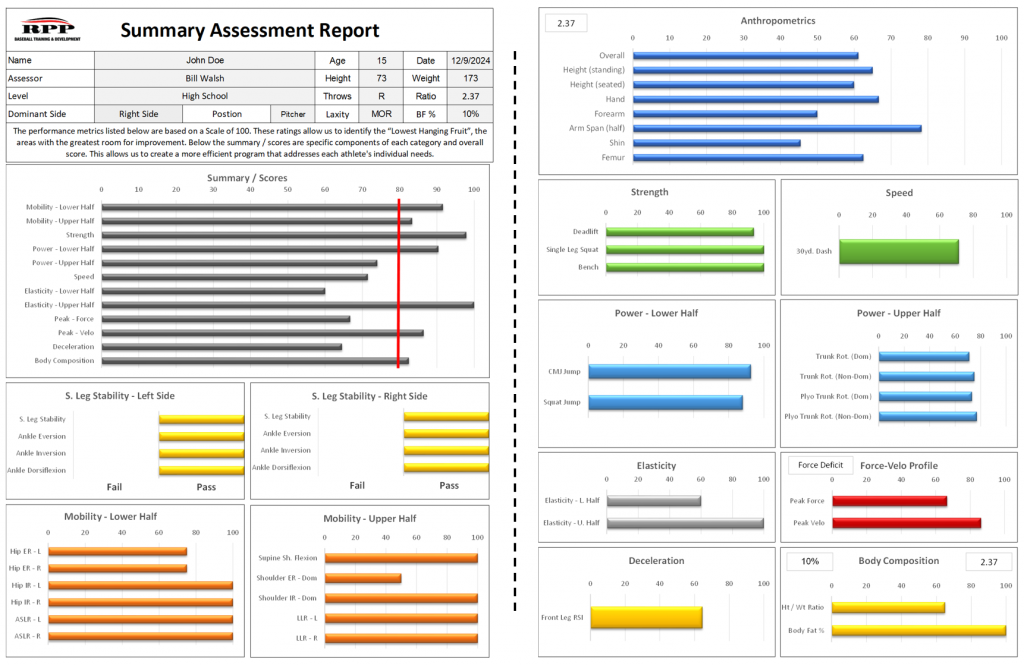
2. Mechanical Analysis
Every pitcher receives a complete mechanical analysis where dozens of possible disconnects in the delivery are reviewed and then summarized into a summary report.
Since no two pitchers are alike, it is our belief that assessing pitching mechanics is part art and part science. We perform this part of the assessment by performing a comprehensive video analysis and a multi-camera motion capture system report (optional).
Video Analysis – In our opinion, assessing a pitcher’s mechanics should start and end with video. All the data in the world can never replace watching a delivery with your own eyes. The pitching delivery is a human endeavor, and in our opinion, video is still KING!
Being able to visually see a pitcher in “real-time” speaks volumes about the athlete’s strengths, weaknesses, and overall athleticism as well as what to leave it alone. Pitching is an art, so…
-
- If it looks athletic,
- And velo and command are there,
- And there is no pain,
- Then LEAVE IT ALONE!
Motion Capture (optional) – Motion capture (“Mocap”) is considered to be the gold standard of measuring athletic movement and is used across many industries and research organizations. It basically involves recording human movement digitally and using that information to create an avatar with extremely high levels of accuracy. This information is then mapped to give us information on degrees of movement and kinematic sequencing that are generally happening too quickly for the naked eye to see.
The following is a sample summary of the various reports.
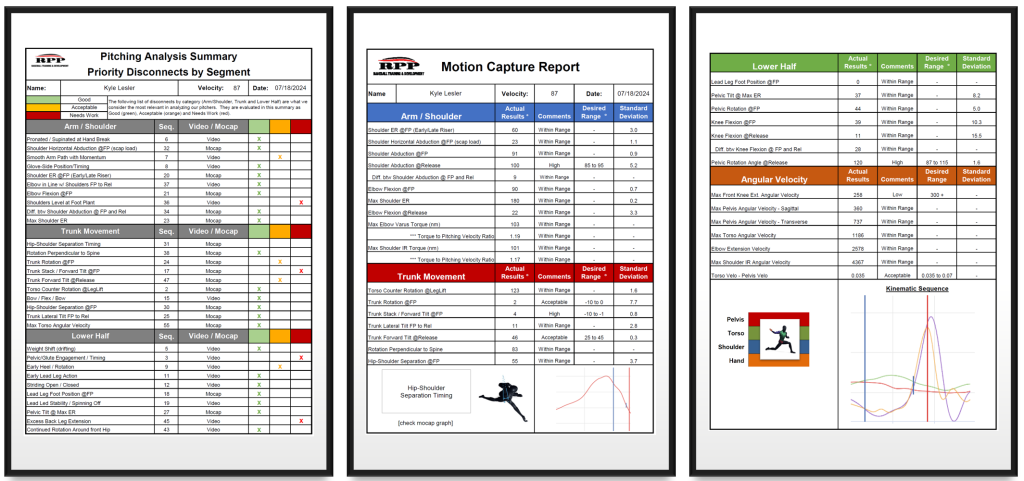
3. Programming – Individualized Mobility Program
Mobility is the ability to move joints through a full range-of-motion under control and it’s just as important as any other part of our programming.
The movement screen that was performed as a part of the initial assessment helps us prepare a completely individualized 15–20-minute mobility program for each athlete. The program is meant to address all pertinent issues related to mobility that may be holding an athlete back. These include those related to the:
-
- Ankle
- Hip
- T-spine
- Shoulders
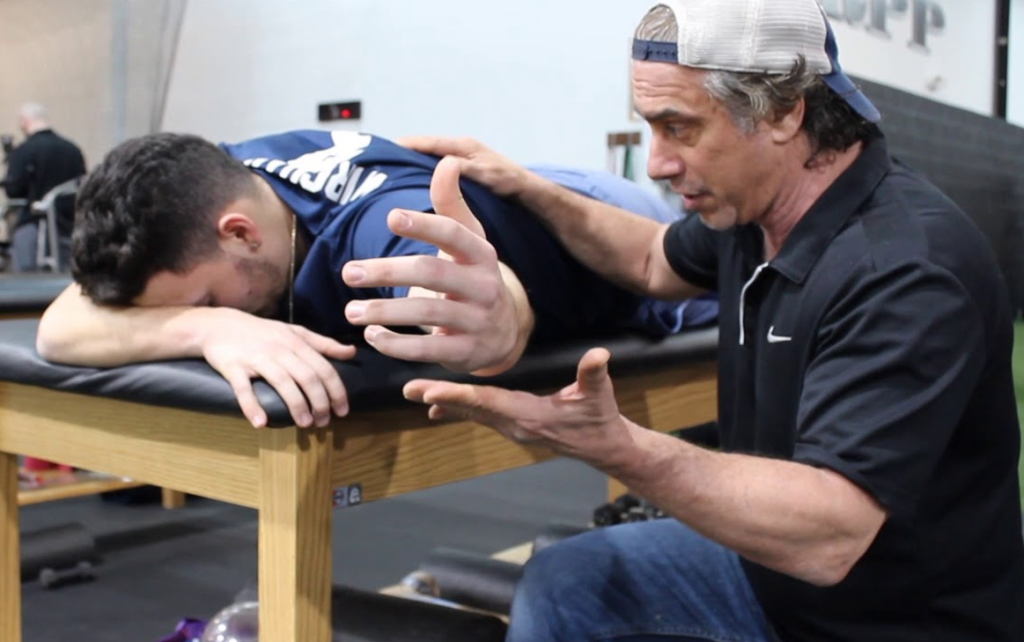
4. Programming – Individualized Throwing Program
The Throwing Program is 5x / week and is comprised of (a) an individualized pre-throw routine including dynamic neuro muscular (DNS) training drills to help trigger reactive ability, (b) corrective plyo drills that were selected during the mechanical evaluation to help improve movement patterns, and (c) a long toss / throwing routine with varying degrees of intensity during the program.
The following is a month-by-month summary of the summer program:
-
- Month 1 – Ramp up – The amount ramp-up varies based on the pitcher’s spring season load prior to arrival
- Month 2 – Velo Phase / Pitch Design – Depending on what we feel is holding the athlete back, month 2 will focus on either increasing velo or movement / building out the pitching arsenal
- Month 3 – Pitch Design / Bullpens / Live AB’s – The final few weeks are designed to put it all together and ensure the athlete shows up on day 1 ready to perform

5. Programming – Individualized Strength Training
The Strength Training program is designed for 5x / week and is broken down into a 5-day program focusing on lower, upper, and full body strength days and a movement and conditioning day. Below is a breakdown of a typical athlete’s monthly focus in the weight room:
-
- Month 1 – Hypertrophy 2 – Focus is on increasing lean muscle mass, especially of the Type 2 fast twitch fiber
- Month 2 – PAP – Focus moves to increasing power and explosiveness
- Month 3 – Conjugate – Focus is putting it all together and breaking the weekly load up between strength and power
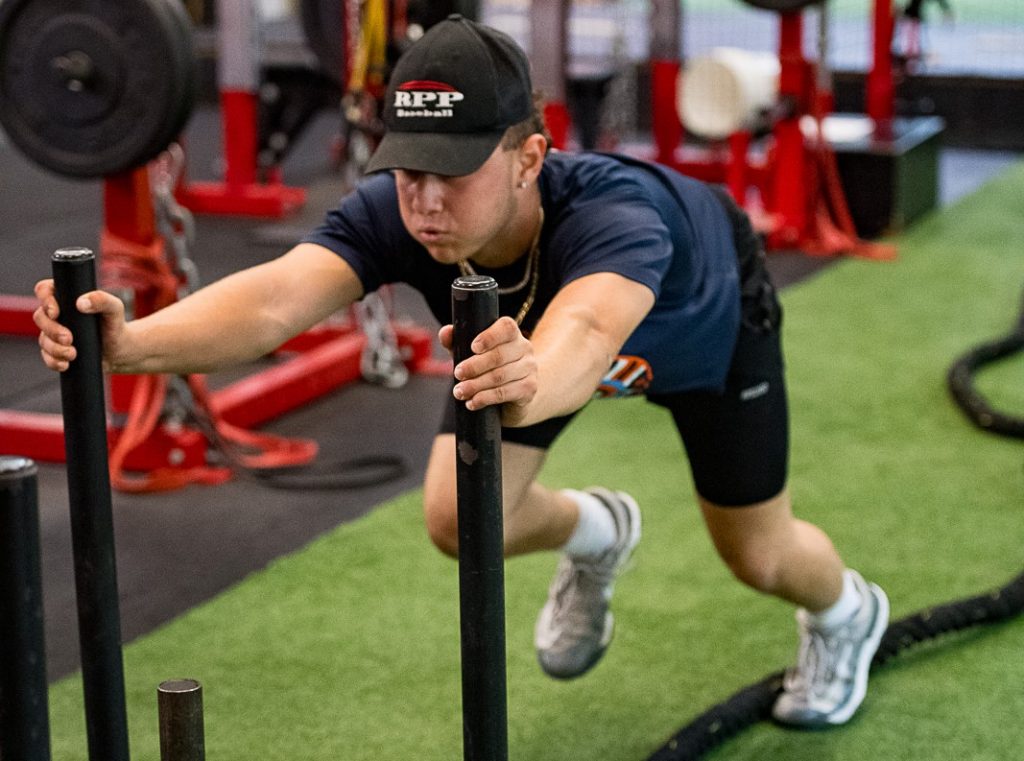
It’s important to note that the strength program is completely intertwined with the throwing program. What you do in a given day in the weight room is very much correlated with what you’re doing inside the nets on the same day.
6. A Typical Day
A typical day will vary on the level of intensity and specific programming but the following is a quick summary of a typical day during the program. You can expect the daily program to take 2 ½ to 3 hours.
-
- Mobility
- DNS Activation Drills
- Pre-throwing (Laxity / MOR)
- Throwing Program – Plyos
- Throwing Program – Long Toss
- Post-throwing
- Strength Training
7. Exit Interview
Upon completion of the program, each athlete will receive what basically amounts to an exit review, going over where you started and how you ended the program, including:
-
- Movement screen
- Body composition evaluation
- Strength testing
- Power production testing
- Upper half – Proteus Power testing
- Lower half – VALD Force Mat testing
- Video analysis and assessment
Summer Program Success Stories
Jackson Hinchliffe – RHP at University of Richmond from 89 to 92 mph with expanded Pitch Arsenal… How did he do it? Read more…
Luke Deschenes – RHP at Seton Hill from 90 to 93 mph with Improved Pitch Arsenal… How do he do it? Read more…
Kyle Lesler – RHP at Fairfield University Velo up from 88 mph to 91 mph… How did he do it? Read more…
Jack Brodsky – Pitcher at Tampa U. from Sitting 91-93 to Sitting 93-94, Touching 95… How did he do it? Read more…
Nate Byrd – Post’s Nate Byrd is Back Healthy, Topping 91 mph (up 4 mph)… How did he do it? Read more…
Declan Hickey – Sophomore at Junior College CCM Velo is Up 10+ mph… How did he do it? Read more…
Colm O’Shea – Newberry College Senior O’Shea gained 4-5 mph, Now Sitting 88-89 (T90)… How did he do it? Read more…
Jack Greco – Susquehanna Sophomore Greco Gained 4-5 mph, up to 87-89, T90 mph… How did he do it? Read more…
Testimonials
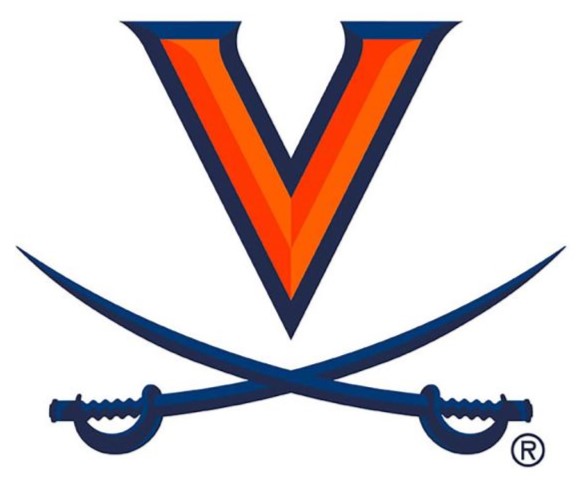
“I have been following Nunzio Signore and RPP Baseball for quite some time. Their knowledge in player development and their training programs are at the cutting edge of where the sport currently resides, whether we’re talking about high school, college or pro ball. They are one of a handful of facilities in the country that have the know-how, systems and wherewithal to take you to the next level.”
– Drew Dickinson (University of Virginia Pitching Coach)

“RPP continually develops some of the best up-and-coming talent in high school baseball. Their programming is always at the leading edge of what’s going on in player development, and their results speak for themselves. Few facilities come close to their standing in the industry.”
– Corey Muscara (Wake Forest University Pitching Coach)

